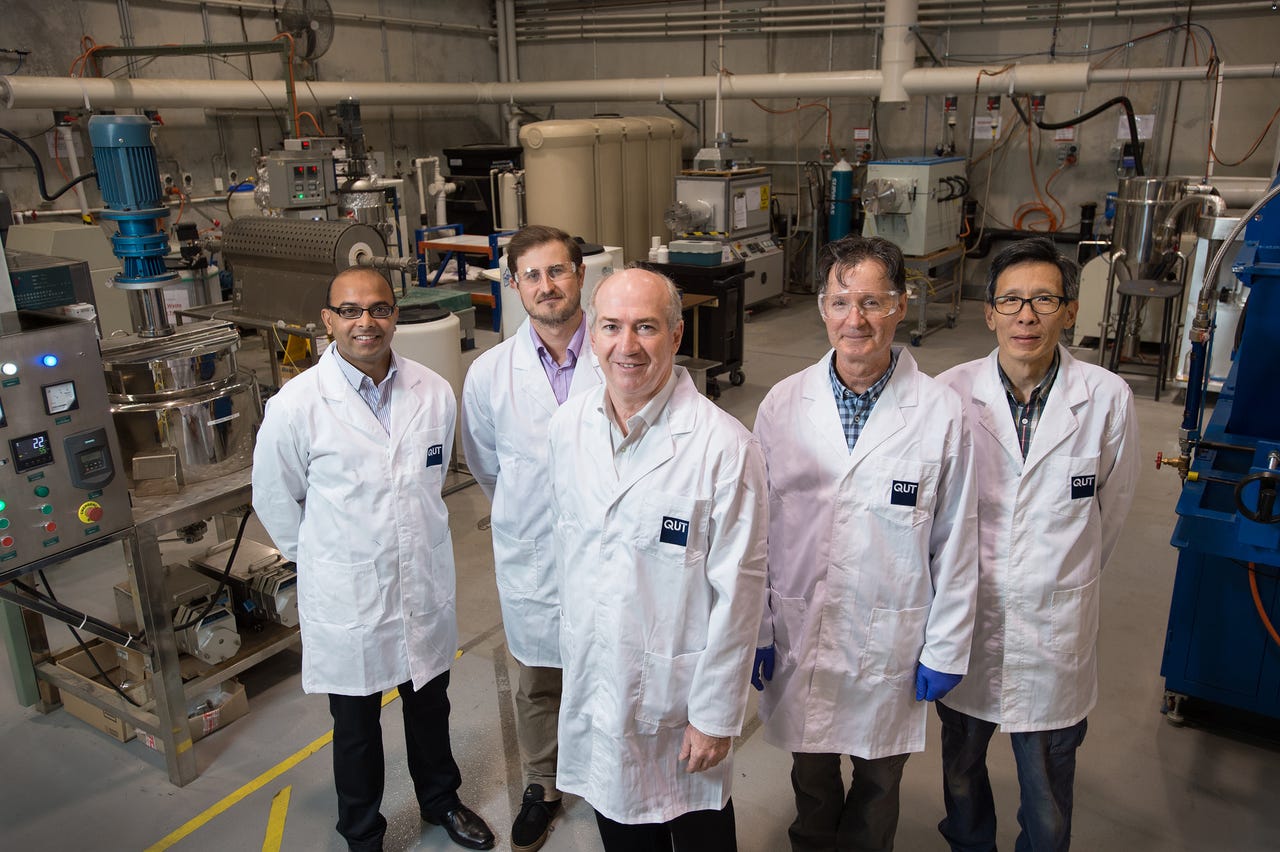QUT manufactures first Australian lithium-ion batteries


Professor Peter Talbot, and his team have developed a long life lithium battery.
Researchers from the Queensland University of Technology (QUT) have produced what they claim are the first Australian-owned lithium-ion batteries after establishing a manufacturing facility capable of such production.
The facility -- located within QUT's pilot plant precinct at Banyo on Brisbane's northside -- contains low humidity electro-manufacturing dry rooms, which the university also claims is a first in Australia.
Professor Peter Talbot from QUT's Institute for Future Environments said the lithium-ion batteries, commonly used in electronic devices such as smartphones and drones, are the same format as those used in Tesla vehicles.
"Importantly, as part of this project we identified the best lithium-based powders to use to create a battery of the highest energy-efficiency standards possible," Talbot said in a statement.
"The powder is a combination of lithium and other compounds. We tested various compositions of chemicals until we were satisfied that we had achieved the best powder possible.
"Our process enables us to rapidly test and prototype rechargeable lithium-ion batteries of various shapes and sizes."
Additionally, Talbot said automating the process could give Australia a competitive advantage in the manufacturing industry, currently dominated by China.
According to Tokyo-based Yano Research Institute, China controls more than 75 percent of the market for electrolyte solutions -- a key component of lithium-ion batteries. Chinese manufacturers are also the dominant producers of other battery components, such as separators and materials for cathodes and anodes.
"As the middle class in the ASEAN region grows, so too will the demand for lithium-ion battery operated goods. As more and more vehicles in the future are manufactured to run on battery power, the development of longer-lasting batteries will be crucial to a vehicle's overall efficiency and appeal to consumers," Talbot said.
The professor said the university can now develop batteries for specific commercial applications.
"We will be able to purpose build the most efficient batteries possible to power any number of devices and products including some of QUT's advanced robots," he said.
The technology and processes developed at QUT as part of the three-year AU$4 million project -- funded by the Auto Cooperative Research Centre and conducted in conjunction with the Malaysia Automotive Institute -- can be used by commercial battery manufacturing companies, the professor added.
In June, plans for a consortium -- including Bill Moss's Boston Energy and Innovation and Magnis Resources, as well as US companies Eastman Kodak, C4V, and C&D Assembly -- to build a $1.6 billion lithium-ion battery factory in Australia had made progress, with the Townsville City Council granting a part of a former CSIRO research station to the group in exchange for equity in the project.
Once in full production the 15GWh manufacturing facility would produce either 250,000 car batteries per year or 1 million home battery units or support 300 microgrids to power small towns, the consortium said.
In July, Australian company Energy Renaissance announced plans to build a $100 million "gigafactory", called Renaissance One, in Darwin for the production of custom-made lithium-ion batteries for large-scale energy storage.
Renaissance One is slated for completion by end of 2018.
The same month, Silicon Valley-based electric carmaker Tesla announced that it will install the world's largest lithium-ion battery on a wind farm in South Australia, following a state-wide power outage earlier this year.
Under an agreement with the South Australian government and French renewable energy company Neoen, the Neoen Hornsdale Wind Farm in Jamestown will be paired with Tesla's 100MW/129MWh battery, which will be installed by the end of the year.
CEO Elon Musk had guaranteed that Tesla will deliver the battery within 100 days of the grid interconnection agreement being signed with the South Australian government -- otherwise, his company will provide the battery for free.
A month later, chemical engineering researchers at the University of Sydney (USyd) and Nanyang Technological University in Singapore announced they had developed a solution for recharging zinc-air batteries that could see them applied to electronic devices in place of lithium ion batteries.
Zinc-air batteries were previously used with expensive metal catalysts such as platinum and iridium oxide, which has limited their application to a small proportion of electronic devices, such as hearing aids and railway signals.
The newly-developed method instead uses high-performance, low-cost catalysts, produced through the control of the composition, size, and crystallinity of metal oxides of elements such as iron, cobalt, and nickel.
These can "overcome the sluggish oxygen evolution and oxygen reduction reaction (OER/ORR) in many electrochemical energy-conversion devices," according to a paper co-authored by USyd's Dr Li Wei.
Trials of the new zinc-air batteries developed with the new catalysts had a 10 percent battery efficacy drop over 60 discharging/charging cycles of 120 hours, which could lead to their application in electronic devices, according to Dr Li.